When you see a bug nibbling all your plants, it’s easy to panic and reach for the pesticide. However, the dangers of using chemicals, particularly pesticides and fungicides, in the garden are very real. Pesticides are fatal to many insects and arthropods, not just the ones labelled; they are never selective. They are also toxic to wildlife, even in tiny doses. For example when hedgehogs eat slugs that are poisoned with pellets, or the pellets themselves, it can kill the hedgehog.
With that in mind, here are some of the most common garden pests and diseases you see in the UK, how to identify them, and what you can do to control them without using dangerous pesticides or herbicides. There are plenty of more natural alternatives that will help with pest control and keep your garden wildlife-friendly.
Small Slugs
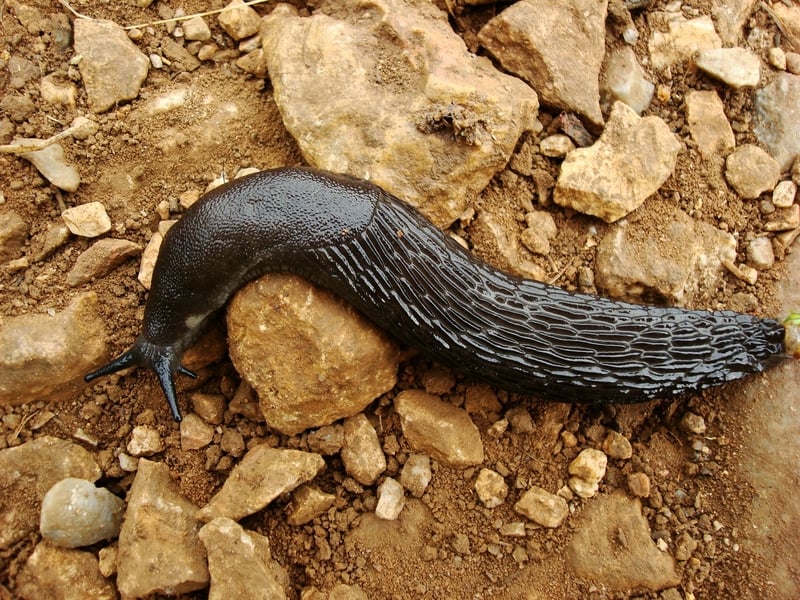
About: Whilst larger slugs eat decaying plant matter, the smaller ones feast upon all of our plants, seedlings and roots! And since they breed all year round, especially when it’s humid, a gardener needs to be prepared.
Damage: Rapid plant eating
Control Methods: Bring in the wildlife; frogs, hedgehogs, birds – they all feast on slugs. Wildlife-friendly gardening will help this. If you think there might be hedgehogs in the neighbourhood, you can leave out food, and even provide a hedgehog home or log pile for them to shelter in. They will spend their nights feasting! A pond is also a great idea (with gentle slope) so that birds, frogs and hedgehogs all have a spot to drink too.
You can also try beer traps, copper wire around pots or thick stems, purchasing nematodes, or placing eggs shells around on the ground.
Snails
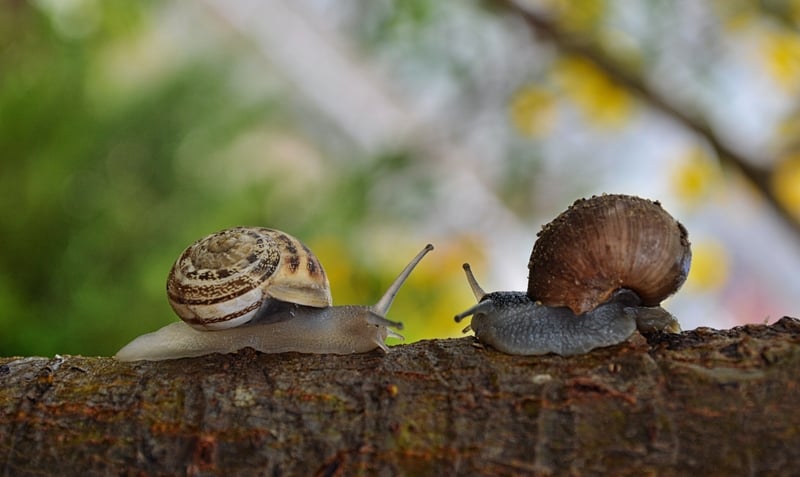
About: Snails are rapid breeders due to having both reproductive organs. They breed in spring within dead plant matter, leaving large clusters of tiny white eggs. You’ll know it’s them by the trails left behind.
Damage: Typically known to target youngest plant leaves, flowers and stems.
Control Methods: Same as slugs. Bring in the wildlife, use beer traps, copper wire, sharp grit. Or arm yourself with a torch and bucket and go out on regular patrols – the evening is a great time to do this.
Stem/bulb eelworm

About: Tiny worm 1-2mm in length. This parasite can remain dormant for years. Breeds rapidly and reaches the adult stage within 2-3 weeks. Eelworms burrow about in the soil, entering plants via small cuts and natural openings.
Eelworms predominantly target bulbs such as Tulips, Hyacinths, Snowdrops, Iris, Daffodils, and the onion family. Herbaceous plants such as Asters, phlox, hydrangeas, irises, campanula, evening primrose, heucheras to name just a few are also subjectable.
Damage: Stem eelworms cause darkening patches on bulbs and stems causing rotten swollen bulbs and yellow swelling on leaves. They move about the plant devouring its tissues until it begins to decay and then they move on to the next plant.
On onions, it’s recognised as ‘onion bloating’ which will kill the plant. Strawberries will become stunted, crumbled, and brittle.
The first sign of damage to the bulb is softening, especially in the bulb’s neck. And they can be infected whilst in storage.
Control Methods: Caliente Mustards and Marigolds have good effects on clearing the ground of nematodes.
Digging up and burning the plants, do not replant the same bulb types for at least 4 years in that area. Dispose of the plants and compost.
Good hygiene- Cleaning pots and tools.
Crop rotation
Weed control
Correct bulb storage. Keep them in a cool and dry dark location. Place bulbs in 45% water for 3 hours before thoroughly drying and planting out.
If you’re suspicious of a bulb you can isolate it and await symptoms to emerge.
Not all plants will die, but an outbreak is something to prepare for.
Aphids
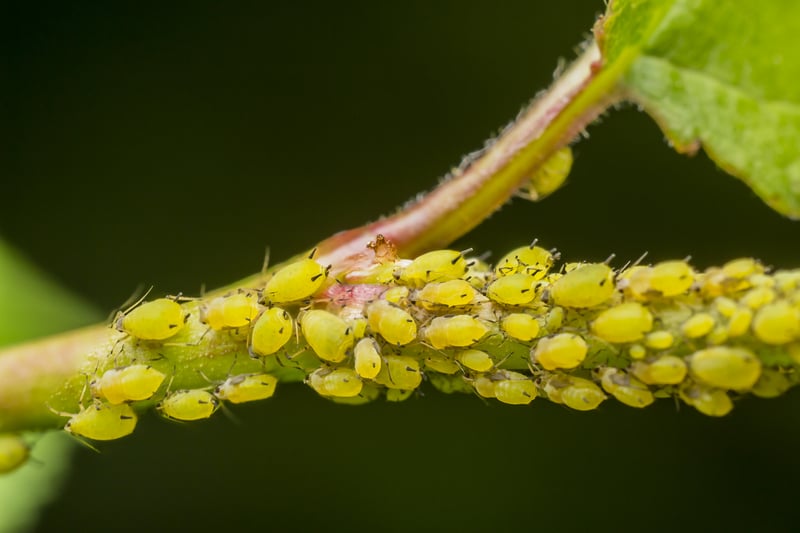
About: Known as aphids, greenfly, whitefly, blackfly, thrips and more. Females give live birth to the nymphs who may already be pregnant with 20 generations of clones of themselves.
They have what’s known as a mutualistic relationship with ants who ‘milk’ the aphids for honeydew in return for security from predators.
Damage: Aphids suck plant sap, excrete honeydew into plant tissues leaving the plant weak, disfigured and developing sooty mould.
Plants very often die from aphids due to their absolutely incredible (although destructive) breeding capabilities. By Autumn some females will be able to fly off to spread further afield.
Control Methods: Again, wildlife will help you clear these pests naturally – Invite more creatures such as Ladybirds! Hoverflies! Bluetits and Lacewings.
You can also plant a sacrificial or decoy plant near by, such as marigolds or nasturtiums, aphids love these and so may leave your roses alone!
Picking them off affected areas, you can also try washing aphids off with washing up liquid and water.
Vine Weevil
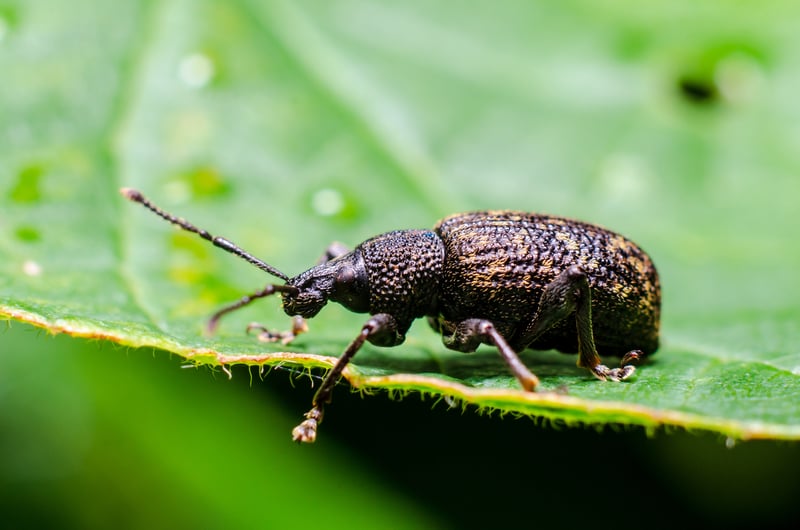
About: Vine Weevil are approximately 10mm in size. They’re a 6 legged leaf eater which doesn’t fly. And they’re most common in greenhouses and potted plants.
Damage: Live their lives scoffing around the leaves of Rhododendrons, Euonymus, and Hydrangeas. They will eat other plants but tend to focus on those. They eat at night. They lay hundreds of eggs at a time, and they’re easiest to spot at the bottom of containers and the stems.
Signs of infection usually involve wilting, and plants falling over from an eaten root system.
Control Methods: Get out with a torch and bucket and shake them off plants, or try using non-drying glue on pot edges.
Focus on preventing eggs from being laid over killing adults.
Nematodes (microscopic worms) kill vine weevil grubs by entering their bodies by releasing lethal bacteria. You can purchase them online. Nematodes arrive in concentrated quantities so make sure you add water to activate them first.
Vine Weevil Larvae
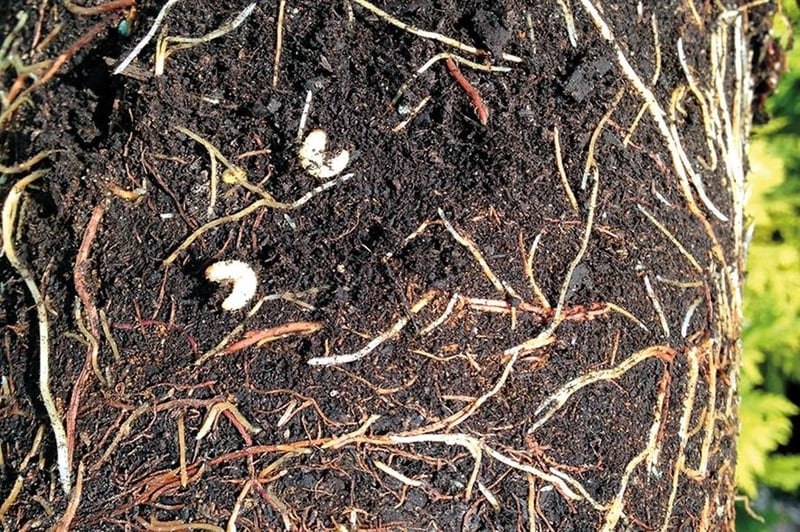
About: Vine Weevil Larvae are little white grubs with black heads which lurk in and under container plants such as cyclamen, begonias, fuschias and more. They overwinter below soil level and continue eating.
Damage: They eat the plant’s roots.
Control Methods: Checking new compost thoroughly.
You can use biological controls such as Heterorhabditis megidis or Steinerma carpocapsae watered onto soil or compost as a drench; soil or compost must be warm, moist.
Careful plant placement.
Grey Mould

About: Grey mould occurs in high humidity areas where its ventilation is limited. Overcrowding and high moisture levels increase risk. Fruit trees and bedding plants are the most vulnerable as well as some vegetables.
Damage: It kills off plants, first of all by rotting, and then grey fungal spores on foliage ignite the spread of disease. Plants affected by slugs also increase plant vulnerability
Control Methods: Consider spacing whenever planting, make sure the air can flow and provide as much ventilation as possible.
Avoid overfeeding – it’s an absolute killer to overfeed plants.
Keep removing damaged areas immediately
Keep up slug protection
Powdery Mildew

About: There are several stages of fungus living in 2 stages on a plant simultaneously. Stage 1 overwinters in buds which emerge as a dry grey powdery coating over leaves in Spring. The second stage sucks the moisture out from the leaves causing them to fall prematurely. Upper leaves are affected first.
Damage: Premature lead death prevents the plants from photosynthesising.
Control Methods: The effects are worse when it’s hot, and when plants are squashed to prevent ventilation and watering is scarce.
Spacing
Provide adequate watering on hot days
Cut out and burn damaged shoots early on.
Rust

About: Rust affects perennials, trees, shrubs, fruit and veg. It’s a naturally occurring predictably after a wet summer, unsightly fungal disease, extremely common, unfortunately, notably surfacing from midsummer.
It starts with little spots, which develop into structures known as pustules. The name rust comes from the bronzy brown colour presented on the pustules, but these can also be yellow, orange, black and white.
You can end up with several pustules on a single leaf.
Plants most commonly affected by rust;
Fuschias (although some varieties are more resilient than others.)
Alliums.
Pears
Mahonia
Hollyhock
Heuchera
Chrysanthemums
Rhododendrons
Iris
Snapdragon
Viola
Vinca
Carrots
Birch
Willow
And so many more, including on pine needles and ryegrass.
Damage: Rust causes leaves to turn yellow and drop off early in the growing season. If the infection becomes aggressive, the plant can lose all of its strength and energy to grow; in some cases, it will die.
Control Methods: Pay close attention to plants regularly. If you see signs of rust on a leaf, then pick affected leaves asap (do not compost).
Provide the best conditions possible for healthy growth, practice good plant hygiene, always avoid overfeeding plants.
Manage watering. Water in the morning to avoid plants sitting in moisture overnight, thus decreasing humidity.
Adequate spacing allows ventilation which prevents pathogens from building up.
All this information aside, when it comes to gardening, is it really essential to stress about creating perfection? Particularly when it comes to gardening for wildlife?
In my own personal experience, our gardens will decide for us what will grow well and what won’t, and sometimes we have to learn to just go with the flow.
When I’ve been really careful with a plant, and it keeps failing, I tend to accept that this plant isn’t meant to grow here. I’ll simply move on and explore other options.
That way, my garden and I become better friends. We support one another and accept what we have and what we can achieve.
Which for me is the whole purpose of it, to bond with nature.
Thanks, Ali
If you would like more information on wildlife gardening, or want to keep up with more of our news, get in touch on either our Facebook page, Instagram, or email

Leave a Reply